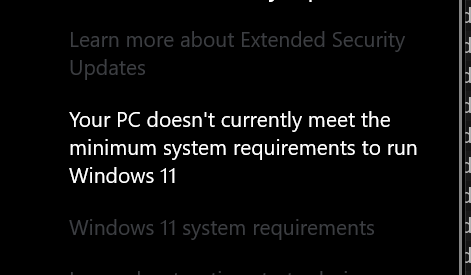winjer
Member

Microsoft Officially Ends Windows 10 Support Today, October 14 2025
It’s finally time to say goodbye to Windows 10.Microsoft has confirmed that support for the operating system officially ends on October 14, 2025, closing out almost ten years of service.
It's finally time to say goodbye to Windows 10. Microsoft has confirmed that support for the operating system officially ends on October 14, 2025, closing out almost ten years of service. After that date, your PC will still work normally, but no more security updates, bug fixes, or customer service help will be available. Microsoft says this is the final stage of its move toward Windows 11, which it now considers its main desktop platform. If you're still using Windows 10, Microsoft strongly recommends checking whether your computer can be upgraded to Windows 11 through the Windows Update menu. Systems that meet the hardware requirements can make the jump easily. Those that don't can still get limited protection through the Extended Security Updates (ESU) program, which will keep sending out security patches for one extra year. The only catch is that you'll have to log in to your Microsoft account at least once every two months to stay covered.
When Windows 10 launched back in July 2015, it wasn't an instant hit. Many people complained about upgrade bugs, driver problems, and the pushy update prompts that made Windows 7 users reluctant to switch. But over the years, Microsoft improved it with regular updates, and Windows 10 became one of the most popular versions of Windows ever. Even today, it's still the go-to system for millions who like its familiar layout and stable performance.
That loyalty hasn't faded. As news of the end date spread, users took to forums and social media to share nostalgia and frustration—some even jokingly posting, "Don't go, Windows 10!" It's a familiar story: when Windows 7 was retired in 2020, people said the same thing. But Microsoft is moving forward, arguing that Windows 11 brings stronger security, better hardware support, and built-in AI features that require a modern foundation.
For most users, the practical takeaway is simple: plan your upgrade early. Make backups, check your system's compatibility, and decide whether to switch or enroll in the ESU program for one more year of updates. After that, your system will become increasingly risky to use online as new vulnerabilities appear without patches.
Windows 10 will always be remembered as the version that bridged the old desktop world with today's connected, cloud-integrated era. It ran everything from gaming rigs to office workstations and set the stage for Windows 11's design. Ten years on, it's earned its place in Microsoft's history.
From now on, there will only be security updates. And this will only last one year, and it requires enrollment.




